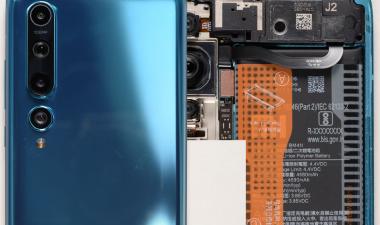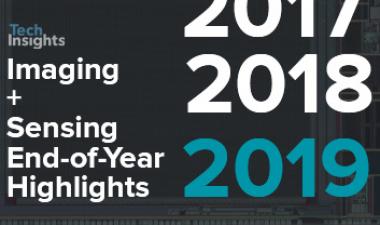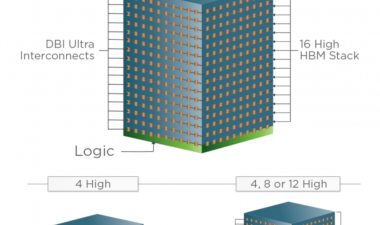自动驾驶汽车的出现有望开创一个个人流动的新时代,并永远改变人们对汽车的看法。除了数据连接和电动汽车,自动驾驶系统将推动汽车中半导体含量达到前所未有的水平,包括GPU、FPGA、专用ASIC和功率半导体。为了使自动驾驶汽车(AVs)成为一种安全、高效和令人愉快的出行方式,需要一套复杂的技术,包括云端技术和边缘技术。
The convergence of the automotive and technology industries is accelerating the pace of innovation in the mobility and transportation sectors, creating opportunities for new players and emerging business models that are disrupting the established industry structure. This dynamic has given rise to four megatrends that are shaping the future of mobility and changing the competitive landscape of the automotive industry.
Electric Vehicles:
清洁能源政策正在刺激替代燃料汽车的发展,标志着从内燃机到电动动力系统的长期转变。这些车辆将采用先进的电池管理系统和专用的功率半导体器件。
Connected Cars:
Vehicle connectivity is bringing new services and capabilities into the car and enabling cars to communicate directly with other vehicles, pedestrians, and city and highway infrastructure with vehicle-to-everything (V2X) communications through 5G and dedicated short-range communications (DSRC) technologies.
自动驾驶车辆:
人工智能(AI)和机器学习(ML)技术在驾驶自动化中的应用正在使自动驾驶汽车成为现实,从先进的驾驶员辅助系统(ADAS)发展到部分和全自动车辆。传感和感知技术,如激光雷达、雷达、超声波、嵌入式视觉系统、GPS接收机和惯性测量单元(IMU)是自主车辆的关键要素。
Smart Mobility:
无处不在的连接和数据分析能够为各种最后一英里的交通服务提供技术平台的开发,包括骑行,汇集,汽车共享,自由浮动汽车共享,对等(P2P)服务,形成新的智能行动行业的基础。
汽车技术智能和知识产权管理可以帮助汽车和供应商通过竞争力的基准,专利许可谈判和赔偿来保护其市场地位并确定额外的收入流。该过程有助于市场进入尽职调查决策,帮助公司了解竞争对手的知识产权和技术优势,以实现差异化,引导重要的技术设计决策,并指导收购专利以实现低风险市场进入。
搜索我们的分析和网站
Recent News and Blogs

网络研讨会:为电动汽车(EV)革命做好准备
加入我们,2021年2月3日,星期三网络研讨会:为电动汽车(EV)革命做好准备美国东部时间下午3点先进的电力设备和点播2021年2月3日,星期三下午3点在线研讨会注册JST和点播2021年2月3日,星期三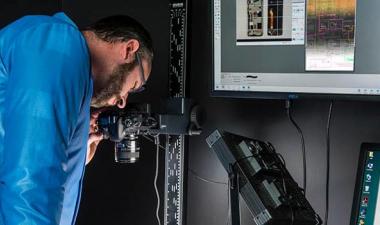
支持半导体行业的知识产权战略
支持半导体行业的知识产权战略Growing complexity of the chip market has made it harder than ever for intellectual property owners to monitor developments, making reverse engineering a crucial process The breadth of reverse
Sony d-ToF Sensor found in Apple’s new LiDAR camera
January 19, 2021 Image Sensor Disruptive Technology Sony d-ToF Sensor found in Apple’s new LiDAR camera Apple’s LiDAR camera was first observed in 2020’s iPad Pro; as expected, we saw that same part used in the iPhone 12 Pro in October. Industry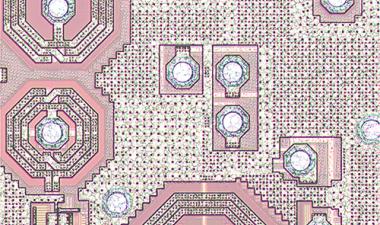
Hisilicon向天线转向调制解调器解决方案 - 移动RF TechStream博客
2021年1月12日John Sullivan HiSilicon向天线到调制解调器解决方案的转变HiSilicon为华为的手机提供射频收发器和移动SoC,但射频前端传统上是从通常的前端采购的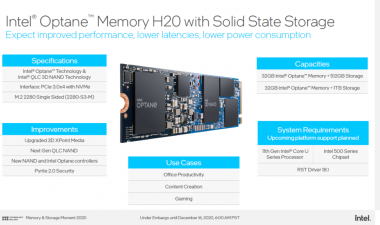
英特尔推出第二代3D XPoint内存,在IEDM-Memory TechStream博客上讨论
12月ember 28, 2020 Dick James Intel Launches 2nd-Gen 3D XPoint Memory, Discusses at IEDM On Dec 16th Intel held a "Memory & Storage Moment"" where they announced five new memory and storage products; two Optane™ SSDs, one for data centers, and one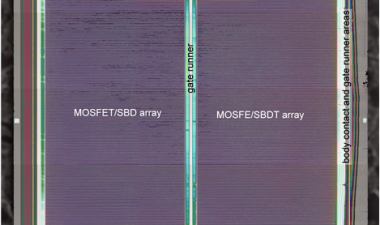
东芝集成二极管到SiC MOSFET-电源TechStream博客
2020年12月21日斯蒂芬罗素东芝集成二极管到碳化硅MOSFET每个碳化硅(SiC)制造商似乎有自己的方法来制造场效应管。无论是平面、沟道、JFET等,整个系统都没有主导设计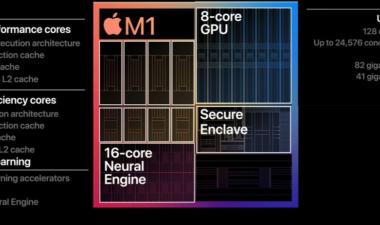
苹果M1的分析正在发生 - 以及热成像?
Dick James是一位近50年的半导体行业资深人士,从事半导体器件的工艺开发、设计、制造、封装和逆向工程。迪克是一个经常投稿的人raybet正规么
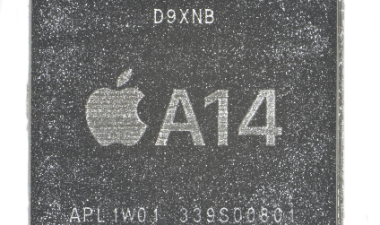
两个新的苹果soc,两个市场事件:苹果A14和M1
可用逻辑订阅>工艺和高级封装>工艺流程>晶体管特性>SoC设计分析>数字平面图分析>分析-数字平面图>标准单元GDS库分析>晶体管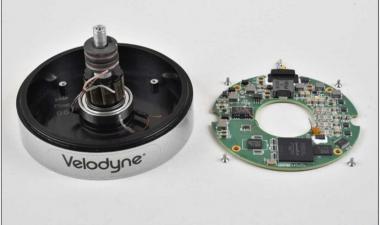
拆卸:Velodyne激光雷达圆盘VLP-16传感器(电子360)
A deep dive into the major components used in the light detection and ranging technology. Posted in Electronics360.
网络研讨会:USB-C电源交换机中的新兴GaN技术
USB-C电源传输适配器中的新兴GaN技术本次活动由Sinjin Dixon Warren和TechInsights介绍,具有USB连接的电源适配器在现代生活中无处不在。我们使用的移动设备需要定期连接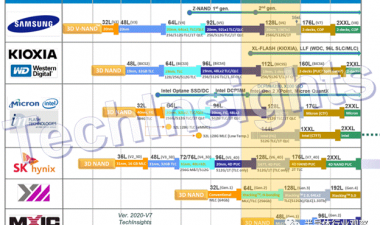
3D flash memory, 176 layers!
到目前为止,NAND Flash已经显示出白热阶段。不久前,存储供应商仍然“看到闪存的高平台上的风景”,有128层。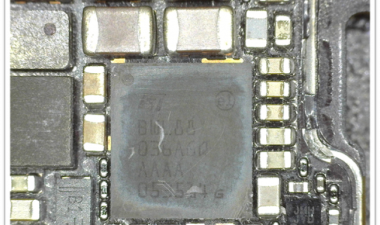
Wireless Charging Speeds Up - Teardown TechStream Blog
高级技术分析师斯泰西·韦格纳斯泰西Wegner is the Senior Technology Analyst of TechInsights’ Teardown division, responsible for ensuring the highly technical data produced by our analysts is transformed into consumable competitive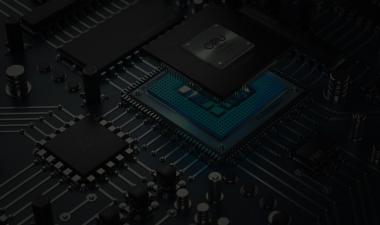
Webinar: Memory Technology 2020 and Beyond - NAND, DRAM, Emerging and Embedded Memory Technology Trends
Memory Technology 2020及以外的NAND,DRAM,新兴和嵌入式内存技术趋势本次网络研讨会由TechIngs介绍,Jeongdong Choe博士将详细审查最新的NAND,DRAM,新兴和
Webinar: An Examination of the Technical and Financial Implications of the Apple iPhone 12
考察苹果iPhone 12的技术和财务影响本文由TechInsights介绍了TechInsights和Bloomberg Intelligence分析师,因为它们分享了对苹果最多的技术和财务见解
STMicroelectronics MasterGaN1内部集成GAN高压半桥-TechStream Power Semiconductor博客
Sinjin Dixon Warren,高级工艺分析师Sinjin Dixon Warren是TechInsights的高级工艺分析师,拥有超过20年的半导体分析经验,是电力电子分析的主题专家(SME)。他拿着一个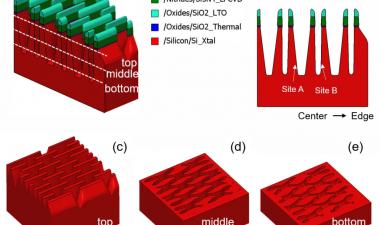
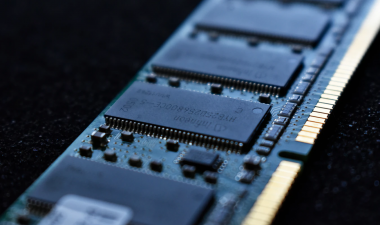
网络研讨会:商用存储设备中的ALD/ALE过程
ALD/ALE Process in Commercially Available Memory Devices 2018 saw memory product manufacturers Samsung, Hynix, Toshiba and Micron introducing 64- or 72- stacked layer 3D-NAND devices, and move into 1x generation DRAM devices. This presentation will
10月苹果:Apple iPhone 12 Pro Teardown - Teardown Techstream博客
高级技术分析师斯泰西·韦格纳斯泰西Wegner is the Senior Technology Analyst of TechInsights’ Teardown division, responsible for ensuring the highly technical data produced by our analysts is transformed into consumable competitive
iPhone相机历史:iphone12的另类与普通
The evolutionary history of the iPhone camera can also be seen as the history of the development of the phone CIS, even if the iPhone does not fully follow the CIS technology trends to advance. Just take this opportunity, but also through the last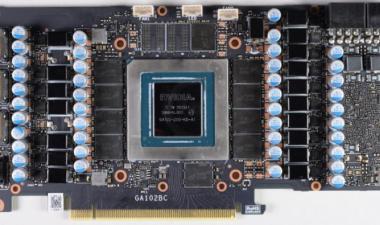
来自Micron-Memory-TechStream博客的新GDDR6X
Jeongdong Choe, Senior Technical Fellow Dr. Jeongdong Choe is a Senior Technical Fellow at TechInsights with nearly 30 years’ experience in semiconductor process integration for DRAM, (V)NAND, SRAM and logic devices. He regularly provides blog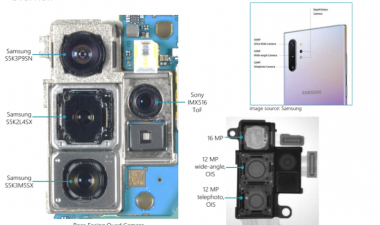
意法半导体在Galaxy Note系列中取代索尼ToF-图像传感器TechStream博客
Ray Fontaine, Product Manager – Image Sensor Ray is one of the preeminent image sensor technology experts in the world, and he regularly publishes Image Sensor analysis content and commentary for TechInsights subscribers. October 11, 2020 Samsung
GaN充电器市场上出现了一个新的玩家——在Rock RH-PD65W USB-C充电器中发现的Innoscience INN650D02
Contributed by: Sinjin Dixon-Warren, PhD The emergence of gallium nitride (GaN) technology in the USB-C chargers is a new trend in the semiconductor market. Over the past year, TechInsights has found GaN technology from Navitas and from Power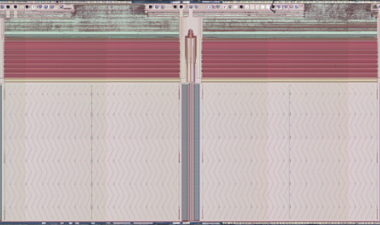
快速查看三星128L(136T)3D V-NAND - Memory Techstream Blog
Jeongdong Choe, Senior Technical Fellow Dr. Jeongdong Choe is a Senior Technical Fellow at TechInsights with nearly 30 years’ experience in semiconductor process integration for DRAM, (V)NAND, SRAM and logic devices. He regularly provides blog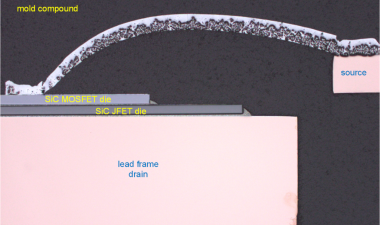
UnitedSiC用他们的SiC JFET技术走了一条少人走过的路-电力半导体TechStream博客
Sinjin Dixon Warren,高级工艺分析师Sinjin Dixon Warren是TechInsights的高级工艺分析师,拥有超过20年的半导体分析经验,是电力电子分析的主题专家(SME)。他拿着一个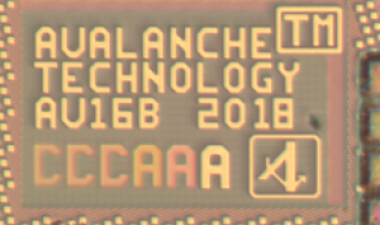
雪崩40 nm pmtj stt-mram - Memory Techstream博客
Jeongdong Choe, Senior Technical Fellow Dr. Jeongdong Choe is a Senior Technical Fellow at TechInsights with nearly 30 years’ experience in semiconductor process integration for DRAM, (V)NAND, SRAM and logic devices. He regularly provides blog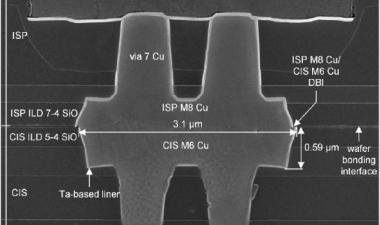
混合键合从图像传感器扩展到逻辑、内存-图像传感器、逻辑和内存TechStream博客
Dick James是一位近50年的半导体行业资深人士,从事半导体器件的工艺开发、设计、制造、封装和逆向工程。迪克是一个经常投稿的人raybet正规么
网络研讨会:空间、电源、光束——缩短长途跋涉,在5G收发机设计和制造方面取得优势
空间,动力,梁缩短艰巨,以获得5g收发器设计的边缘,移动射频景观已经变得更具竞争力,引进了5克,辅以相关创新旨在解决各种各样的创新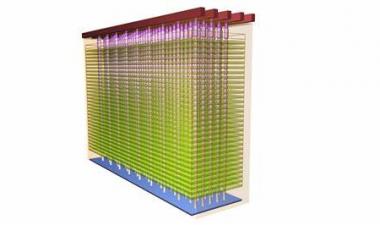

SK hynix 128L三维PUC NAND(4D NAND)
skhynix发布了世界上第一个128层(128L)3D NAND,他们称之为4D NAND。这是他们的第二代NAND使用外围下单元(PUC)架构构建;第一代是他们的96L NAND。在PUC架构中,外围设备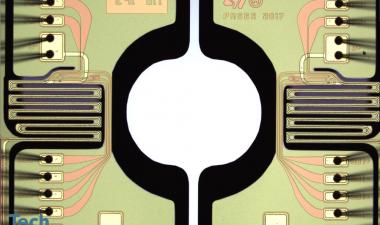
Intel RealSense L515激光雷达相机内部
简介激光雷达传感的世界正在发展。旋转转台激光雷达在自动驾驶等应用中很常见(请参阅我们的汽车激光雷达拆卸订阅),但它们正被新一代固态激光雷达所取代
Webinar: ALD/ALE Process in Commercially Available Logic Devices
2018年商用逻辑器件的ALD/ALE工艺推出了新一代逻辑产品,其特点是以Intel为主打的finFET晶体管及其10nm代微处理器,随后是TSMC和三星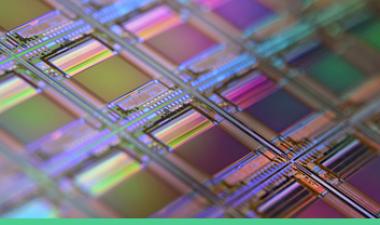
Samsung S5K33D i-ToF with 7 µm Pixel Global Shutter - Image Sensor TechStream Blog
Ray Fontaine, Product Manager – Image Sensor Ray is one of the preeminent image sensor technology experts in the world, and he regularly publishes Image Sensor analysis content and commentary for TechInsights subscribers. August 12, 2020 Our teams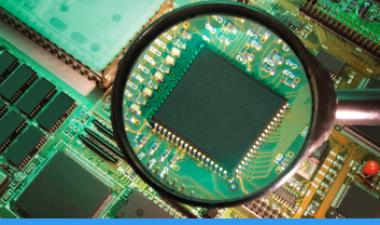
60年的半导体行业及其改变专利战略
贡献:Arabinda DAS今天,半导体行业是一个庞然大物,其年销售收入跨越4000亿美元。在其60年的存在之上,这种成熟的行业已经尝试过各种型号,如集成装置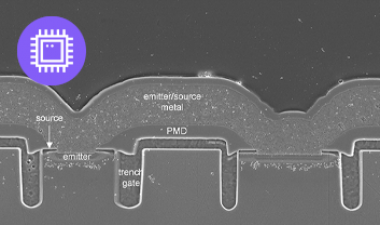
雪佛兰螺栓动力系综述
Posted: July 09, 2020 Contributed by: Sinjin Dixon-Warren, PhD Electric vehicles (EV) are potentially a disruptive technology in the automotive market. They offer the promise of increased energy efficiency and the potential for reduced emissions
Memory Process Webinar: 3D NAND Word Line Pad (WLP)
美国东部时间2020年6月24日星期三下午2:00主持:Chi Lim Tan 3D NAND(垂直NAND)凭借其更高的密度和更低的每比特成本,一直是固态硬盘(SSD)普及的驱动力,这得益于创新和持续发展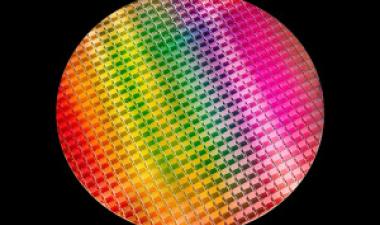
Intel’s 10nm Node: Past, Present, and Future – Part 2
有人说,在2017年下半年至2018年上半年的时间框架内,英特尔的10nm节点是如此半生不熟,以至于英特尔不得不为后续产品大幅重新设计其10nm工艺技术。在任何情况下,一个SKU和有限的可用性说明了问题。
苹果电脑:即将向ARM芯片过渡
Quand on dit ce mois-ci, c’est à l’occasion de la Conférence des développeurs qui se tiendra dans la semaine du 22 juin, un événement très important appelé WWDC ou Worldwide Developers Conference qui se tient en Californie, à San José ou à San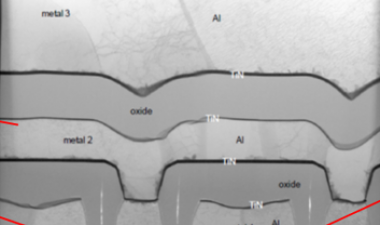
再论APA光学GaN-HEMT的开创性专利
发布时间:2020年6月5日供稿人:辛金·迪克森·沃伦博士电力电子行业正处于转型期。多年来,硅基器件一直占据着行业的主导地位,传统的硅MOSFET晶体管被用于较低的成本
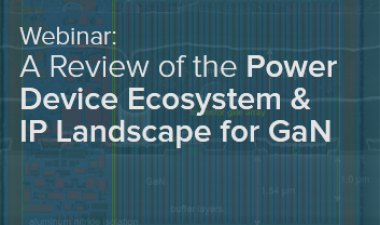
On Demand Webinar: A Review of the Power Device Ecosystem & IP Landscape for GaN
Wednesday May 27, 2020 / 2:00 p.m. ET Hosted By: Sinjin Dixon-Warren The power electronics industry is in a period of transition. For many years silicon-based devices dominated the industry, with conventional Si MOSFET transistors being used for
The guide to effective NAND patent investigation
由于波形和协议测试对于调查内存技术专利的使用证据至关重要,TechInsights的Martin Bijman和Neil MacLeod仔细研究了顶级NAND专利所有者的投资组合,以确定它们之间的区别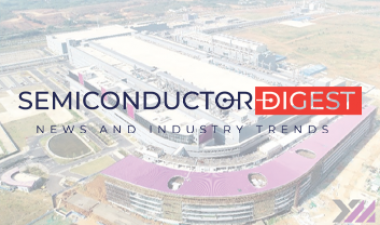
解锁YMTC 64层3DXTacking®Nand闪存的秘密
看看YMTC的第二代3D-NAND技术,它使用“Xtacking”将外围电路与内存阵列面对面而不是并排连接。最早发表在《半导体文摘》上。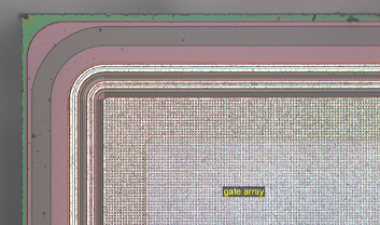
SIC电源晶体管工艺流程分析:RoHM SCT30222ALGC11工艺流程
Contributed Author: Sinjin Dixon-Warren The market for Silicon Carbide (SiC) power transistors is expected to grow considerably over the coming years. SiC power transistors have several advantages over traditional silicon-based devices, including
专利组合管理:2020年的有效策略和最佳实践
4月29日-中午12:00-1:30(美国东部时间)-现场网络研讨会,“专利组合管理:2020年的有效战略和最佳实践”,由知识集团主办。主要主题包括:专利组合管理的趋势和发展,以及
选择合适的专利软件以获得更好的效果
There have never been so many IP tools and technology aides on the market, but how do you decide which ones are going to help your business? Martin Bijman of TechInsights explains.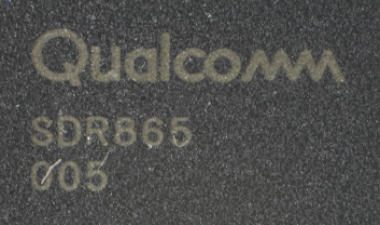
高通公司Snapdragon SDR865收发器分析;支持5G-6 Ghz和LTE服务
The Snapdragon 865 platform is Qualcomm's most advanced 5G chipset to date with support for 5G, sub-6, mmWave and LTE. 4G/5G dynamic spectrum sharing, will enable "operators to accelerate 5G deployments by using their existing 4G spectrum holdings to
看看苹果A12Z芯片上的仿生系统
苹果A12Z仿生SoC只是A12X的更名版,有启用的GPU内核吗?当我们第一次在实验室得到苹果ipadpro2020 A2068时,这是我们想知道的第一件事。什么是A12Z?当我们看到A12Z时,在视觉上看不到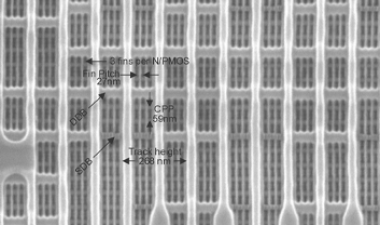
TechInsights在三星Exynos 990中证实了三星真正的7LPP工艺
去年,三星宣布在Exynos 9825中使用的7LPP工艺中引入EUV。通过对零件的分析,我们发现9825的7LPP工艺和Exynos 9820的8LPP工艺差别不大。现在,我们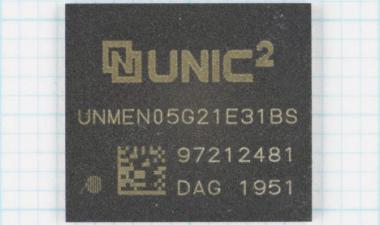
YMTC is China's First Mass Producer of 3D NAND Flash Memory Chips
Contributing Author: Jeongdong Choe Originally Posted March 12, Revised April 7 2020 TechInsights finally found 3D Xtacking® NAND devices manufactured from Yangtze Memory Technologies Co., Ltd. (YMTC) in Wuhan, China. With this device, YMTC has
三星Galaxy S20 Ultra 5G相机拆卸
贡献作者:Ray Fontaine祝贺三星团队不仅提供了规格良好的相机系统,而且是第一个以0.7µm代像素上市的团队!2019年9月宣布的GH1叠层成像仪正在研发中
三星Galaxy S20 Ultra 5G拆解分析
Contributing Authors: Daniel Yang, Ray Fontaine It is an especially busy time in TechInsights’ labs. Just a few days after we started the teardown of various models of the Xiaomi Mi 10 flagship series - the world’s first Qualcomm Snapdragon 865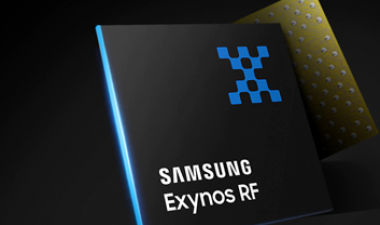
最近分析三星移动射频组件
Shannon 5800 55M5800A01随着行业扩大其使用5G,三星继续在移动通信技术领域进行创新,包括RF收发器和MMWAVE的相控阵解决方案以及5G嵌入式移动处理器
如果说苹果受到了冠状病毒的伤害,那么它的供应商和竞争对手可能也会受到影响
苹果公司(Apple Inc.)出人意料地警告称,由于冠状病毒(coronavirus)的流行,该公司可能无法实现本季度的销售目标,这对其芯片和其他供应商以及同样依赖中国生产产品的竞争对手来说,都是一个很大的痛点。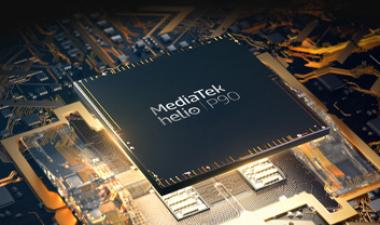
最近的Mediatek移动RF组件和分析
MT6303P AN10516CW 2.95 x 1.74-180nm移动射频架构的复杂性不断增加,以支持多种标准,我们在几乎每一款新手机中都发现了新的移动射频组件。在撰写本文时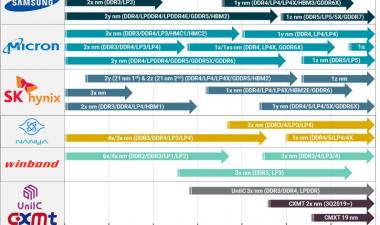
In 2020, 3D flash memory will be fully upgraded to 100 multi-layer stacks
3D闪存可以堆叠多少层?就像摩天大楼不可能无限期地堆积起来一样,3D闪存的层数也是有限的。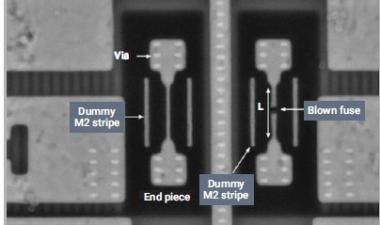
使用OTP-NVM保护智能互联家庭
盗版的市场是巨大的,即使在硬件上实现了安全,黑客也变得越来越复杂。侵略者和保护者之间的竞争是一场没有尽头的战争。智能互联家庭设备越来越多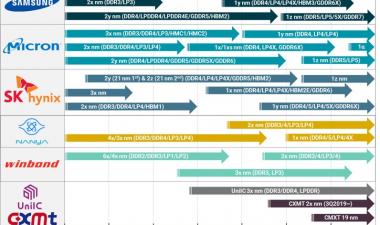
PC技术趋势2020-DRAM和Flash
目前,有关各区的内地内地内地的各各各各各各各各各各各各各各各各各各各各各各各各各各各各各各各各各各各各各各各各各各各各各各各各各各各各各各各各各各各各各各各各各各各各各各各各各各各各各各各各各各各各各各各各各各各各各各各各各各各各各各各各各各各各各各各各各各各各各各各各各各各各各各各各各各各各各各各各各各各各各各各各各各各各各各各各各各各各各各各各各各各各各各各各各各各各各各各各各各各各各各各各各各各各各各各各各各各各各各各各各各各各各各各各各各各各各各各各各各各各各各各各各各各各各各各12377る
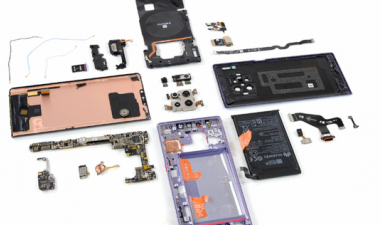
华为Mate 30 Pro 5G拆解:卖6399元整机,BOM成本仅2799元
根据代理分析,4G版是华为的第一个没有我们零件的智能手机产品,而5G版仍然使用一些美国制造的组件,比例为...
Deep dismantling of Huawei Mate30 Pro 5G: more than 2,000 components from Japan
从BOM表中,整机的估计价格为395.71美元,相当于2800元,其中主控制芯片占整机价格的约51.9%。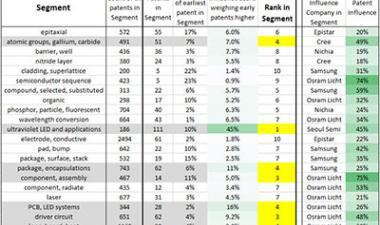
首尔半导体专利拍卖分析显示,资产鱼龙混杂
首尔半导体(Seoul Semiconductor)最近宣布,将拍卖两个专利包,一个在本月底,另一个在1月份,从而涉足专利市场的销售领域。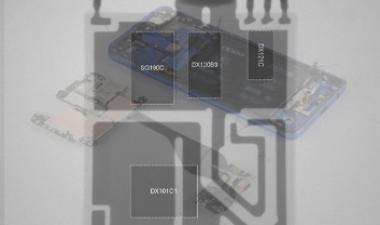
powerintegrations通过PowiGaN技术赢得了OEM设计的胜利
发布时间:2019年12月12日贡献作者:Sinjin Dixon-Warren,PHD消费者对较小的形状因素和更高权力的需求,以及政府效率法规,正在推动USB适配器市场的创新。USB-C电源交付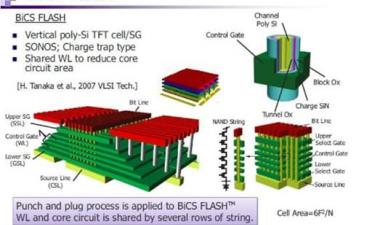
东芝WD联盟3D NAND量产将采用三星TCAT工艺
集微网消息(文/Yuna),据Impress Watch网站报道,东芝在12月8日 召开的IEDM会议上声明在3D NAND闪存量产中采用类似于三星TCAT的存储单元结构。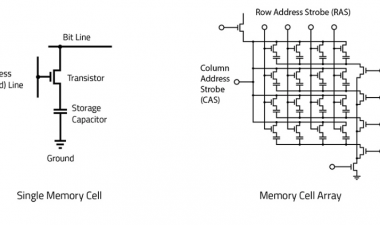
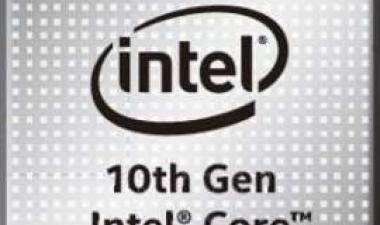
Comet Lake for desktop will appear around February 2020? Intel CPU roadmap
TechInsights于10月31日发布了一份题为“英特尔酷睿i7-1065G7”的摘要报告“冰湖10纳米第二代处理器分析”。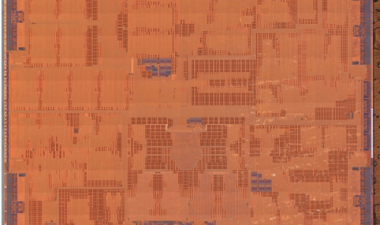
kirin 990 5g核心数据曝光: 113.31 square millimeters integrated 10.3 billion transistors
Recently, Huawei released its new 5G mobile phone, the Mate 30 5G series. The performance of its Kirin 990 5G SoC is very exciting. Recently, professional chip research institute TechInsights dismantled this commercial 5G integrated SoC chip.
苹果U1-延迟芯片及其可能性
发布时间:2019年11月8日供稿作者:Stacy Wegner Figure 1:Apple U1 UWB芯片iPhone11中最吸引人的组件之一就是神秘的芯片Apple简单地贴上了“U1”的标签。TechInsights一直在忙着对此进行分析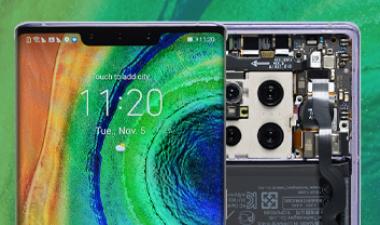
华为Mate 30 Pro 5G拆卸
介绍麒麟990 5克发布:11月7日,2019 Contributing Authors: Daniel Yang, Stacy Wegner The Huawei Mate 30 Series is the latest installment of the company’s annual flagship smartphones, released on September 19, 2019 in Munich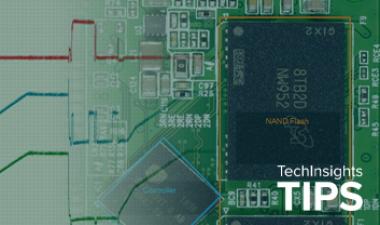
技巧网络研讨会:分析NAND闪存和SSD设备的技术
日期:2019年11月6日/美国东部时间下午3:00至4:00由Neil MacLeod和Marty Bijman介绍内部探测、波形分析和更多数据中心的广泛采用和扩展将SSD市场推向了一个高度竞争和竞争的时期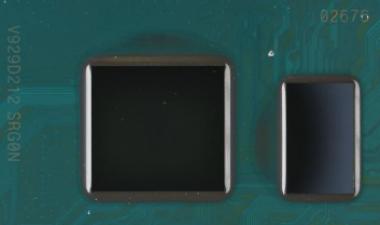
Intel Core i7-1065G7 “Ice Lake” 10 nm 2nd Gen Processor Analysis
Intel has released their first 10 nm 2nd Gen processor into consumer products – the Intel Core i7-1065G7 processor, better known as Ice Lake. Dell and Microsoft have already announced the inclusion of Ice Lake in some of their latest offerings. This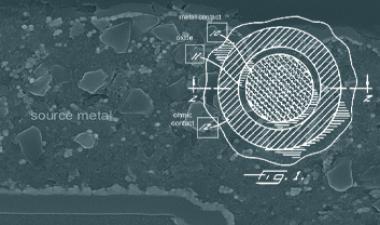
SIC MOSFET技术的演变:回顾性
发布时间:2019年10月31日投稿作者:新津迪克森沃伦碳化硅(SiC)是一种广泛使用的工业材料。碳化硅公司在1893年发现艾奇逊工艺后开始大规模生产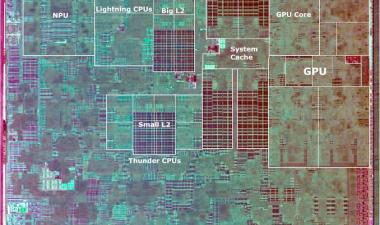
Apple iPhone 11,11 Pro&11 Pro Max评论:性能,电池和相机升高
TechInsights.has now officially released a die shot of the new Apple A13, and we can confirm a few assumptions on our side.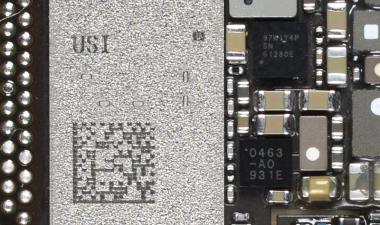
Apple U1 TMKA75超宽带(UWB)芯片分析
One of the most interesting components from the recently released Apple iPhone 11 line of phones is one that Apple has said very little about; the Apple U1 Ultra Wideband (UWB) chip. So far, Apple has said only that the chip enables directional
TechInsights:iPhone11 Pro Max相机售价73.5美元
TechInsights.publishes its estimation of Apple iPhone 11 Pro Max components. The cameras appear to be the post expensive part at $73.50.
e-mobility如何改变汽车市场
With some TechInsights industry experts, Morahari Reddy and Jianchun Xu, we will analyze the market and focus on different aspects.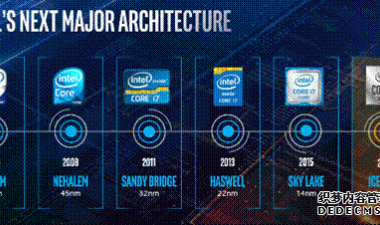
E-Government - Deep Analysis of Intel Ice Lake: Innovation across Six Pillars
在今年的台北电脑展上,英特尔推出了第10代核心处理器,即10nm进程的冰湖处理器。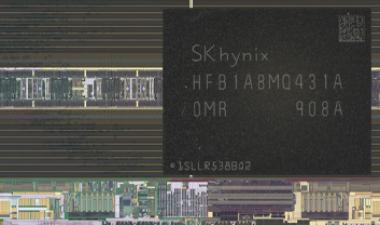
SK hynix 96L 3D PUC NAND Analysis
在全球范围内的储存制造商中,SK Hynix目前拥有NAND闪存市场份额的第5个职位,10.3%。它们是释放9倍层NAND解决方案的最新功能,使用SK Hynix 96L 3D PUC Nand。SK Hynix'96L 3D PUC的开发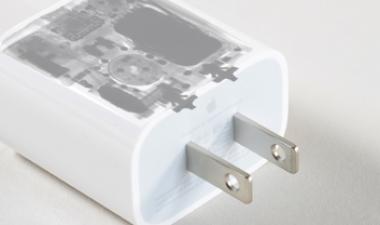
内置iphone11promax附带的苹果1720充电器
发布时间:2019年9月27日贡献作者:Sinjin Dixon-Warren iPhone 11 Pro Max船用Apple 1720 18 W USB-C电源输送充电器。该设备被额定交货5 V和3 A或9 V和2 A.在跟进我们最近的博客中TechInsights.Analyses iPhone 11 Cameras
TechInsights发布了一份关于新款苹果iPhone 11 Pro Max智能手机的拆卸报告,其摄像头上有一些信息: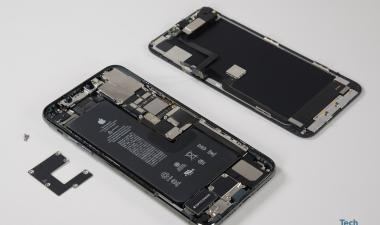
Apple iPhone 11 Pro Teardowns Look Encouraging for STMicro and Sony
STMicroelectronics and Sony each appear to be supplying four chips for Apple's latest flagship iPhones. Many other historical iPhone suppliers also make appearances in the latest teardowns.
Apple iPhone 11 Pro Max Teardown
Posted: September 23, 2019 - Updated: October 1, 2019 Contributing Authors: Daniel Yang, Stacy Wegner, Albert Cowsky We are always excited to see a new Apple iPhone, and this year’s iPhone 11 line is no exception. This is the first ever Apple event
网络研讨会:准备许可证:使用工具扩展许可证计划
最初提交时间:2019年9月19日/美国东部时间12:00至下午1:00主办人:Martin Bijman Licensing是一种行之有效的专利组合货币化手段,但那些将在从专利所有权到专利利润的道路上取得成功的人将不会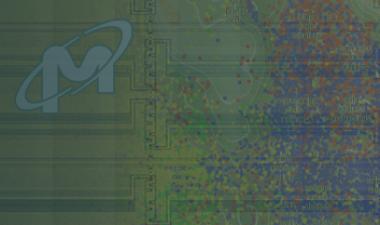
微米分析sis Overview: LPDDR4 DDR4 3D NAND Flash and XPoint Reverse Engineered
发布日期:2019年9月17日,凭借2018年304亿美元的收入、NAND闪存16.5%的市场份额和DRAM 23%的市场份额,美光是存储和存储技术领域最大的参与者之一。对于那些希望支持其产品的人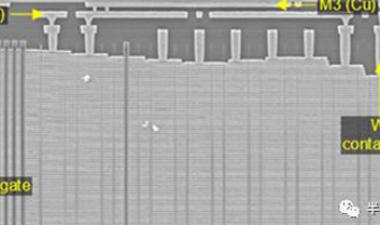

网络研讨会:电力半导体– A Market Overview & In-depth SiC and GaN Device Analysis
上一篇广播:2019年9月10日星期二和2019年10月8日的星期二主持:建春徐和仙金迪克森 - 沃伦电力半导体市场估计到2025年底达到32亿美元。通过增加全球需求的推动

Peloton IPO Preview: All Hype, No Muscle
Peloton, which manufactures and sells premium, large-screen, stationary fitness bikes and treadmills, as well streaming subscriptions for classes aimed at those using the equipment, is expected to go public sometime in the next few months.
Un móvil de gama alta se vende casi al triple de lo que cuesta fabricarlo
Un teléfono móvil se vende casi tres veces más caro de lo que cuesta fabricarlo, atendiendo al coste de todos los componentes que integran estos dispositivos, desde la batería o la cámara hasta el sistema operativo que permite que funcionen las
A high-end mobile phone sells almost three times what it costs to manufacture it
考虑到构成这些设备的所有组件(从电池或摄像头到允许应用程序运行的操作系统)的成本,手机的售价几乎是制造成本的三倍

Why I keep writing ’bout holes in the sensor
Dpreview对FujifilM GFX 100中等格式相机的审查显示了具有死像空间用于相位检测自动对焦(PDAF)模块的后果的后果
12月a Technologies Fan-In WLP in Qualcomm PM8150
发布日期:2019年8月29日,WLP市场的粉丝预计将以稳定的速度增长;从2018年的29亿美元增长到2024年的44亿美元,复合年增长率为6.5%。最近的贡献者之一,这个市场是德卡技术,其M系列扇出晶圆级封装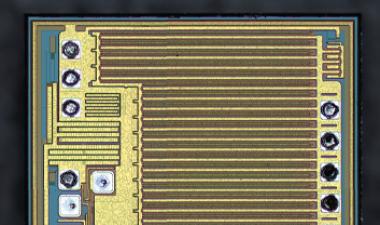
GaN, SiC, and Si technologies in AC Adapters
Posted: August 14, 2019 Contributing Authors: Sinjin Dixon-Warren, PhD Introduction AC Adapters are a constant reminder that the mobile devices that we have come to love are not quite as mobile as we would like to think. Every single mobile device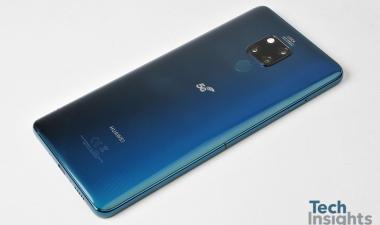
华为Mate 20 X(5G)拆卸中意外设计获胜
2019年是我们看到5G智能手机开始起飞的年。TechInsights在4月份发布了一款三星Galaxy S10 5G拆除的博客,这是世界上第一个韩国的5克手机。Galaxy S10 5G SM-G977N基于三星
第4部分:非拜耳CFA,相位检测自动对焦(PDAF)
分为4部分的博客系列:智能手机成像器的最新技术第4部分:非拜耳CFA,相位检测自动对焦(PDAF)发布时间:2019年7月30日贡献作者:Ray Fontaine内容改编自TechInsights的国际图像论文
第3部分:背部发光的活性Si厚度,深沟槽隔离(DTI)
分为4部分的博客系列:智能手机成像仪的最新技术第3部分:背光有源硅厚度,深沟隔离(DTI)发布时间:2019年7月23日贡献作者:Ray Fontaine内容改编自TechInsights的论文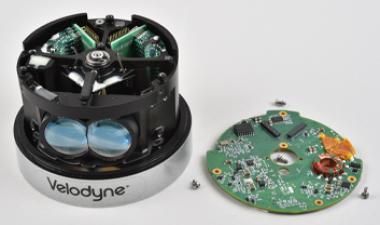
Velodyne激光雷达圆盘拆卸
Posted: July 22, 2019 According to BIS Research, the automotive LiDAR market was estimated at $353M USD in 2017, and is anticipated to reach $8.32B by 2028. The LiDAR market is set to become one of the most competitive segments of the automotive
Part 2: Pixel Scaling and Scaling Enablers
4部分博客系列:智能手机成像仪的艺术状态第2部分:Pixel Scaling和Scaling eNaberers发布:2019年7月16日贡献作者:ray fontaine内容从TechInsights的国际形象传感器的纸张适应了

第1部分:芯片堆叠和芯片间互连
4-Part Blog Series: The State-of-the-Art of Smartphone Imagers Part 1: Chip-stacking and chip-to-chip interconnect Posted: July 09, 2019 Contributing Author: Ray Fontaine Content adapted from TechInsights’ presentation for the International Image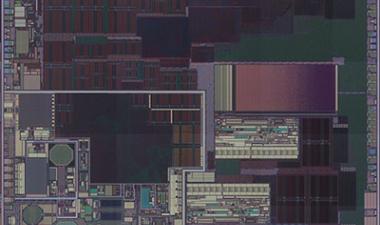
AMBIQ Micro Apollo 3蓝色超低功耗MCU
发布时间:2019年6月11日AMBIQ Micro Apollo 3蓝色超低功耗MCU MCU市场拥挤和竞争力,拥有全球越来越多的半导体公司在这项技术领域的研发花费;预计这一市场将在2019年达到〜20亿美元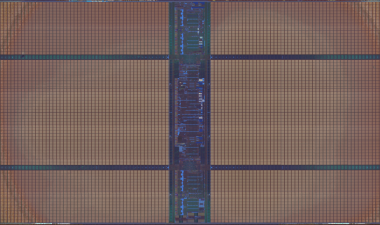
三星、SK hynix和Micron的1y DDR4 DRAM
发布日期:2019年6月7日三星LPDDR4X 17纳米1Y三星DDR4 17纳米1Y微米MT40A2G4SA-062E 8Gb DDR4三大DRAM制造商(三星、SK hynix和微米)在2017年和2018年推出1x,达到了20纳米以下。一个新的里程碑是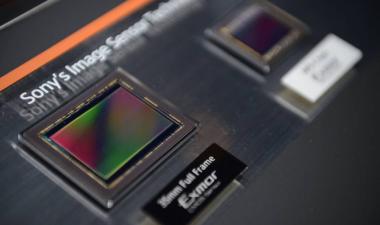
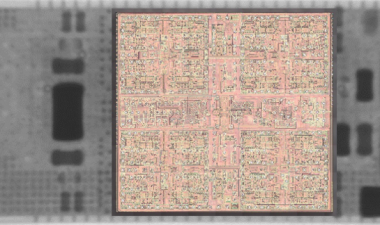
高通公司QTM052毫米波天线模块
发布时间:2019年5月31日高通公司QTM052毫米波天线模块高通公司声称,通过将毫米波技术整合到一个小型、高度集成的模块中的移动射频前端,实现了“不可能、可能”。有许多挑战
NAND技术:打开大门
TechInsights的Martin Bijman和Trevor Izzak解释说,在600亿美元的NAND技术市场上,专利前景分析可以给公司带来优势。
网络研讨会:识别和追查专利侵权者-利用技术证据建立你的主张运动
在其核心,主张运动依赖于使用证据(EoU),以证明存在正在进行的侵权行为。如果没有人使用你的专利组合所涵盖的技术,那么你的专利就没有那么有价值了。相反地,当存在出口创汇时,专利组合的价值更大。
Electric Cars Gain Traction, But Challenges Remain
(半导体工程)电池驱动电动汽车预计在2019年的出货量将达到一个里程碑,但这项技术要在市场上获得更广泛的采用,还面临几个重大障碍。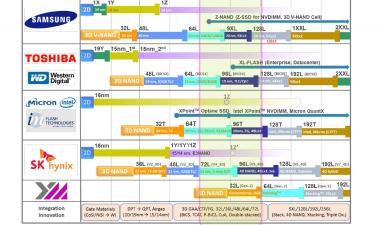
来自IEDM18的TechInsights内存技术更新
发布时间:2019年4月11日投稿作者:迪克·詹姆斯,赵正东去年周日晚上在IEDM,TechInsights举行了一个招待会,Arabinda Das和赵正东发表了演讲,吸引了一屋子与会者
9X层3D NAND分析
发布日期:2019年4月10日TechInsights对三星、东芝和Intel/Micron TechInsights解决方案的分析已经开始,这些备受期待的9XL 3D NAND解决方案包括:三星92L 3D V-NAND和东芝96L 3D BiCS Intel/Micron 96L
三星Galaxy S10 5G拆卸
发布时间:2019年4月9日投稿作者:Daniel Yang&Stacy Wegner It's here。在我们的实验室里。。。上周发生了两件重大的5G事件:Verizon在芝加哥推出了他们的5G网络,而在地球的另一边,三星则推出了全球5G网络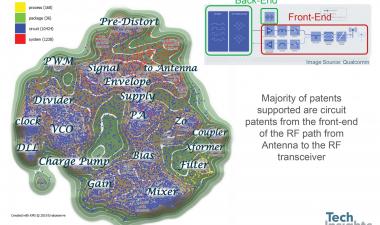
Analyzing innovations in mobile radio frequency front-end integration
发布时间:2019年4月9日3G和早期4G智能手机的移动射频前端架构相对简单,可以用分立组件构建。如今,移动射频(RF)前端的支持变得更加复杂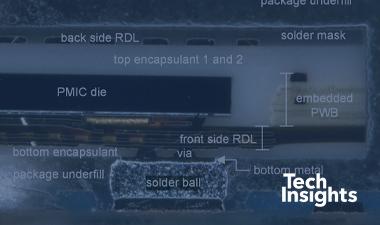
网络研讨会:高密度扇出封装技术-检查和比较
最初呈现:2019年4月9日至2:00至下午3:00 et托管:Michel Roy低密度扇出包技术已经存在十多年。由于RDL计数和线路空间/线宽的功能的限制,这
3D NAND Metrology Challenges Growing
(半导体工程)最大的挑战是描述3D NAND器件的内部,它由复杂的材料、多层和微小的通道孔组成。然后,当你添加更多的层时,计量学的挑战就增加了
自主汽车正在推动创新
Advances in AVs are having a ripple effect in multiple technology fields, from radar and LiDAR to signal processing. However, the rapid innovation pace is also creating challenges for automakers.
Siemens patent filings climb, but quality over quantity is the name of the game
2018年,西门子(Siemens)超越华为(Huawei)成为欧洲专利局(EPO)的头号备案商,这是自2011年以来,西门子从未占据过的一个位置。它投资了。。。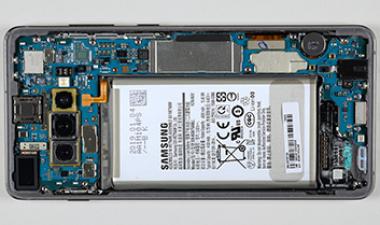
三星Galaxy S10+拆卸
发布时间:2019年3月1日投稿作者:Michelle Alarcon、Daniel Yang、Stacy Wegner、Albert Cowsky我们提前一点拿到了新的三星Galaxy S10+!TechInsights从韩国收到了Exynos三星Galaxy S10+SM-G975F/DS,并已投入使用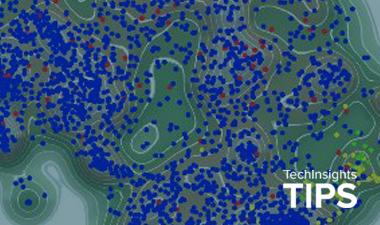
网络研讨会:移动射频领域
最初提交时间:2019年2月27日/3:00至4:00美国东部时间主持:John Sullivan A Patent and Technology Perspective我们估计移动射频(RF)市场价值约190亿美元。移动射频创新旨在提高
联想将新的Snapdragon带到市场上
Posted: February 20, 2019 Contributing Authors: Stacy Wegner and Daniel Yang Lenovo Z5 Pro GT How long would it take you to count from 1 to 220,000? Probably longer than 32 seconds, and yet 32 seconds is reportedly how long it look for Lenovo to sell
Navitas Found Inside the RAVPower RP-PC104-W Gallium Nitride 45 W USB C Power Delivery Charger
发布时间:2019年2月7日投稿作者:Sinjin Dixon Warren,PhD Figure 1–RAVPower RP-PC104 USB-C充电器650 V氮化镓(GaN)功率高电子迁移率晶体管(HEMT)的主要新兴应用之一可能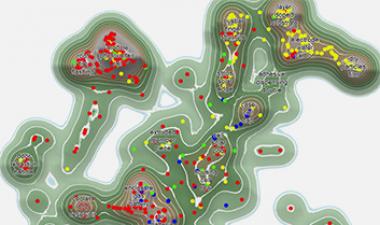
特斯拉准备将麦克斯韦的干电极创新应用于电池制造
发布时间:2019年2月7日投稿作者:Marty Bijman和Jim Hines图1-特斯拉的投资组合,包括麦克斯韦和SolarCity收购图2-特斯拉投资组合景观,显示哪些发明源自特斯拉、SolarCity和
网络研讨会:寻找技术使用的证据-好的,坏的,和丑陋的
Originally Presented: December 12, 2018 / 2:00pm to 3:00pm ET Hosted By: Martin Bijman TechInsights has identified Evidence of Use (EoU) for over 6,000 unique patents. In doing so, we have significantly evolved our understanding of what patents can
网络研讨会:利用技术证据加强专利
Originally Presented: October 23, 2018 / 12:00pm to 1:00pm ET Hosted By: Mary Lupul Patent Strengthening is a term we use to describe the different methods that can be applied during the prosecution to both maximize the usefulness of a patent once it
网络研讨会:优化专利起诉以实现更强大、更有价值的专利
最初提交时间:2018年10月4日/12:00 pm-1:00 pm EDT主办人:Martin Bijman&George Pappas专利强化是指在起诉期间从专利中实现最大潜在价值的过程-雷竞技会黑钱吗
网络研讨会:比较领先的机顶盒、流媒体设备和智能电视——设计和BoM视角
最初呈现:2018年9月18日/ 00 PM至3:00 PM et托管:Stacy Wegner具有显着的电线切割趋势,据说经营者如何响应和修改其产品,以保留流动诱惑的投资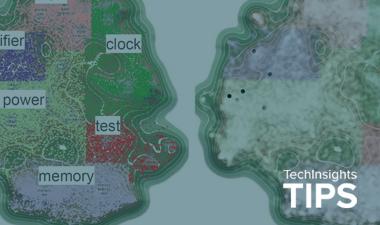
汽车专利:所有者,技术和调查EOU
Originally Presented: July 11, 2018 / 2:00pm to 3:00pm ET Hosted By: Jim Hines The automotive industry is facing disruption from new market entrants, emerging mobility business models and changing consumer attitudes about car ownership. The future of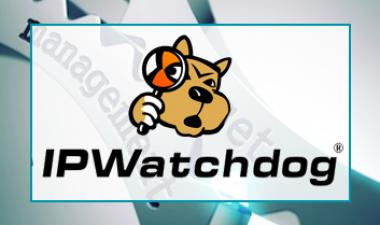
通过专利加强创造更好的应用程序雷竞技会黑钱吗
Patent strengthening is the term we use to refer to the process of achieving the greatest potential for value from a patent during the prosecution – before a patent is even granted.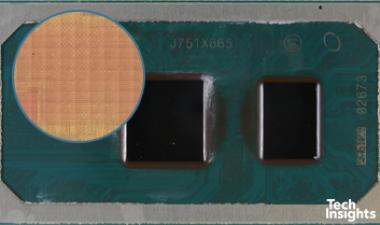
英特尔10 nm逻辑过程分析(Cannon Lake)
发布时间:2018年6月12日英特尔10nm逻辑流程分析TechInsights已找到已久的大炮湖 - I3-8121U CPU内的英特尔10nm逻辑流程,用于Lenovo Ideapad330。这项创新拥有以下内容:逻辑晶体管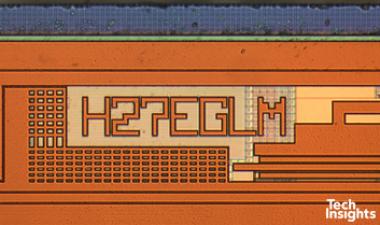
SK hynix 72L 3D NAND分析
发布时间:2018年5月31日SK hynix 72L 3D NAND Analysis SK hynix声称已经创造了业界第一个72层256Gb 3D NAND闪存。与48层3D TLC芯片相比,这种创新的块大小大了50%,编程时间更短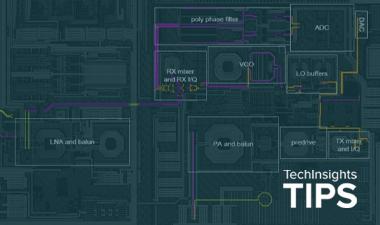
网络研讨会:黑匣子揭示-在具有挑战性的产品领域调查专利技术
最初呈现时间:2018年5月3日/美国东部时间下午3:15至4:00主持人:Martin Bijman“黑匣子揭秘”是我们用来指“硬东西”的术语——由于某种原因,难以分析使用证据的技术。这些可以
优步专利景观是什么样的?
发布时间:2018年2月27日供稿作者:Marty Bijman最近,IAM的Timothy Au发布了一篇博客,介绍了Uber的投资组合。该博客引用了Uber的投资组合构成,并提供了过去5年中他们的IP事件的历史记录
网络研讨会:2018年及以后的公司的专利组合货币化关键考虑因素
最初提交时间:2018年2月20日/美国东部时间下午3:00至5:00主办人:Martin Bijman&George Pappas专利强化是指在起诉期间从专利中实现最大潜在价值的过程-雷竞技会黑钱吗
网络研讨会:释放软件专利的价值-技术视角
Originally Presented: February 1, 2018 / 12:00 pm - 1:00 pm ETHosted By: Mike McLean, Gene Quinn & Walter Hanchuk Alice has had an impact on software patents, but they can and still do hold significant value. If your portfolio includes software
Job Vacancy: VP, Financial Controller
Reporting to the CFO, as the VP Finance, you will provide leadership to the Finance team members responsible for the day-to-day accounting, payroll, tax and treasury, reporting, planning, budgeting and statutory filings. You will regulate corporate
职位空缺:软件开发人员
We are currently seeking a Full Stack Software Developer to join one of our Colorado TechInsights Platform development teams. Do you have a passion for solving complex and interesting problems? Do you strive to learn something new every day? Do you

